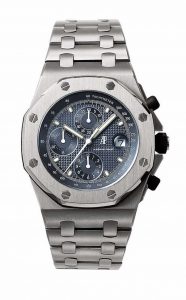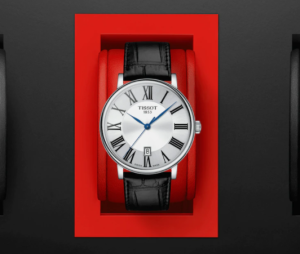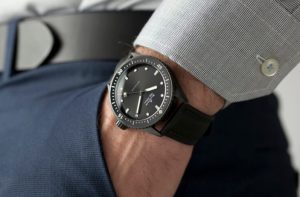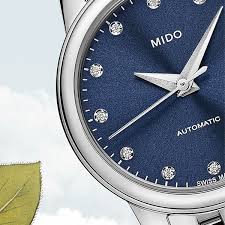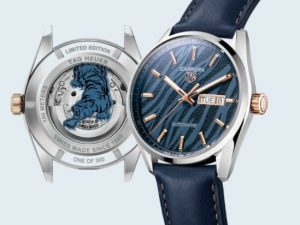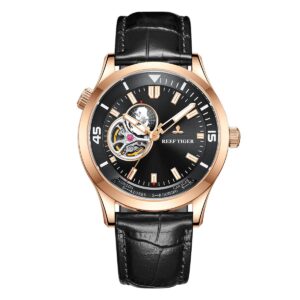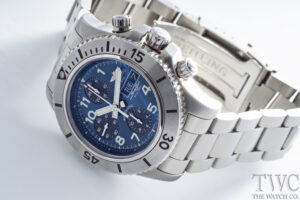

Audemars Piguet presented a good range of watches with something for everyone. What was unusual was the relatively few high complication watches. On more than one occasion AP unveiled a bewildering number of complications, but this year the quantity was more manageable.

All of the new high complications are still tourbillon watches (blame Renaud et Papi) but the fact that there are fewer of them is indicative of the general demand for tourbillons, even at the expensive, interesting end of the market.
The Millenary collection had several new models added. The men’s and ladies’ versions of the basic model both have new dials.
Men’s followed by the ladies’ model
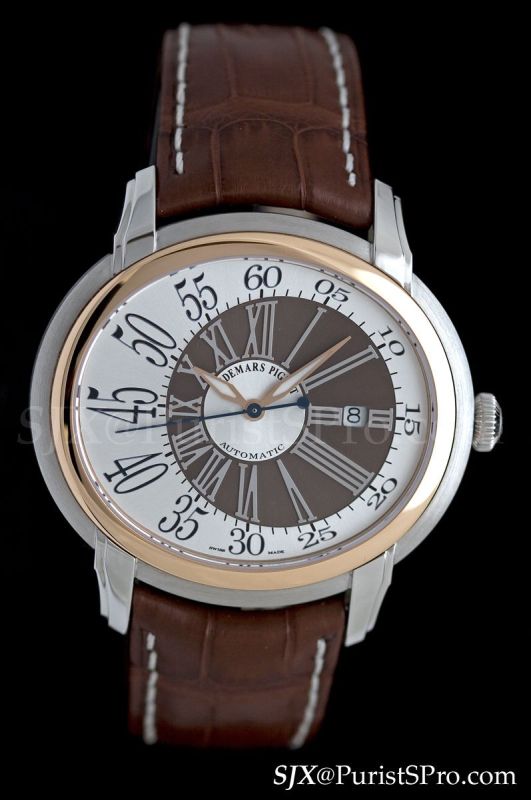
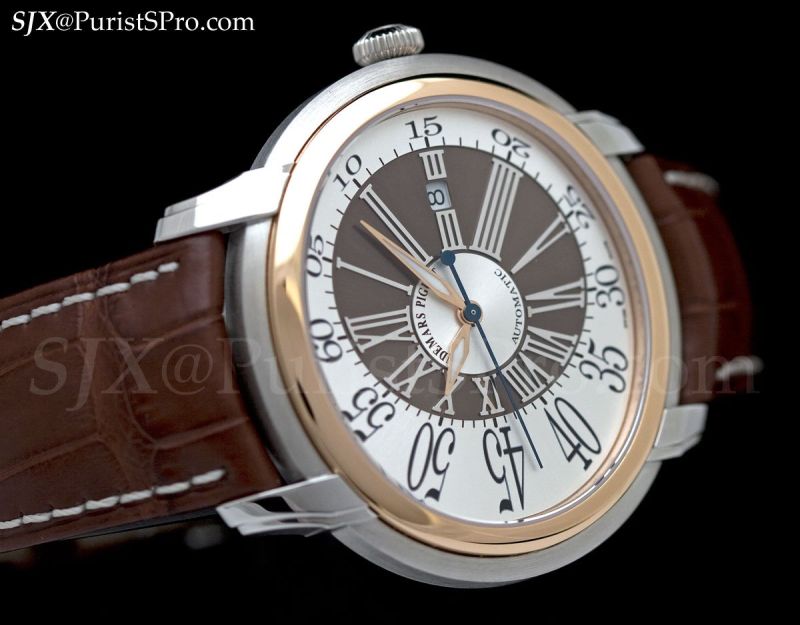
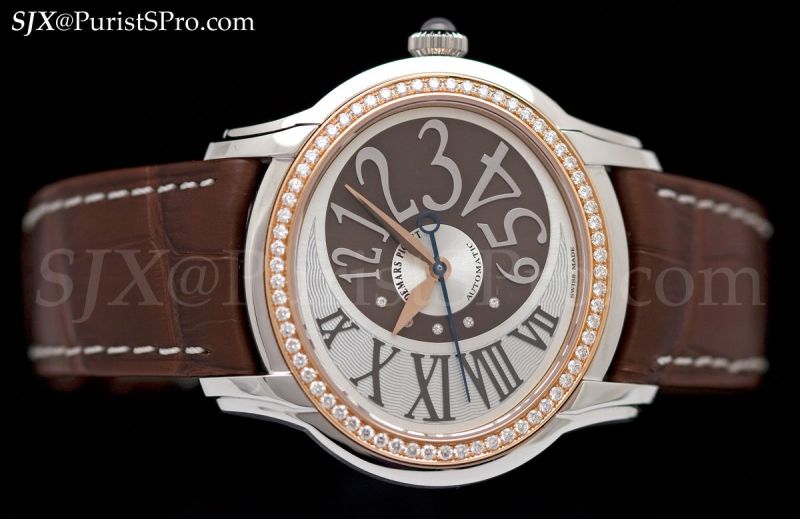
Also receiving a facelift is the Millenary chronograph launched last year. It is now in rose gold with an attractive silver and brown dial.

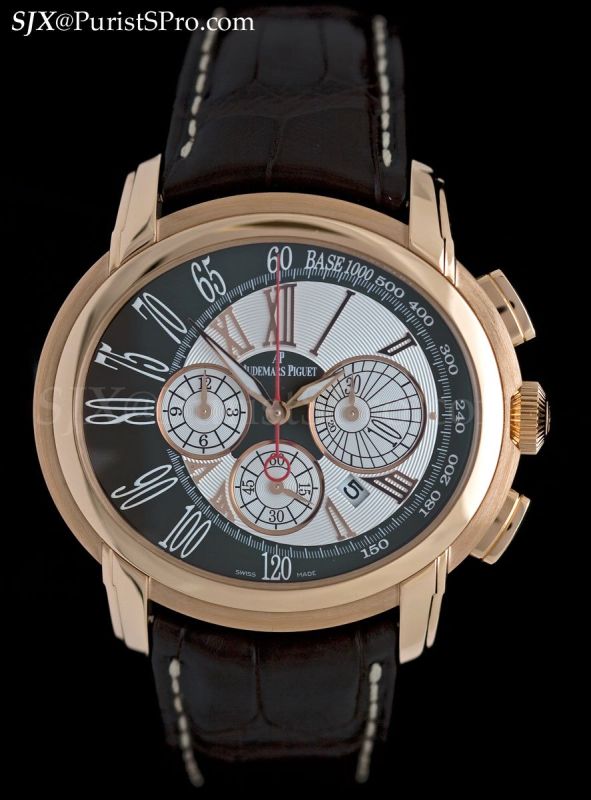
Another new Millenary is the limited edition dedicated to Quincy Jones, a singer-songwriter, hence the piano key motif on the dial. The watch is 45 mm wide and features a black PVD coated case. Surprisingly for a celebrity-themed limited edition, it is not a Royal Oak Offshore. One would expect otherwise, but this is a fairly ordinary watch in look and feel.


Now we come to the piece de resistance of the Millenary line, a tourbillon chronograph housed in a forged carbon case with a ceramic bezel and pushers. The Millenary Carbon One was launched and delivered late last year though it is officially part of the 2010 collection.


The position of the pushers at 10 and 2 o’clock, coupled with give the black and red colours give the watch an aggressive look. Its light weight gives it an unobstrusive feel on the wrist (only 69 g) though I am wary of the resistance of both ceramic and forged carbon to sharp knocks.
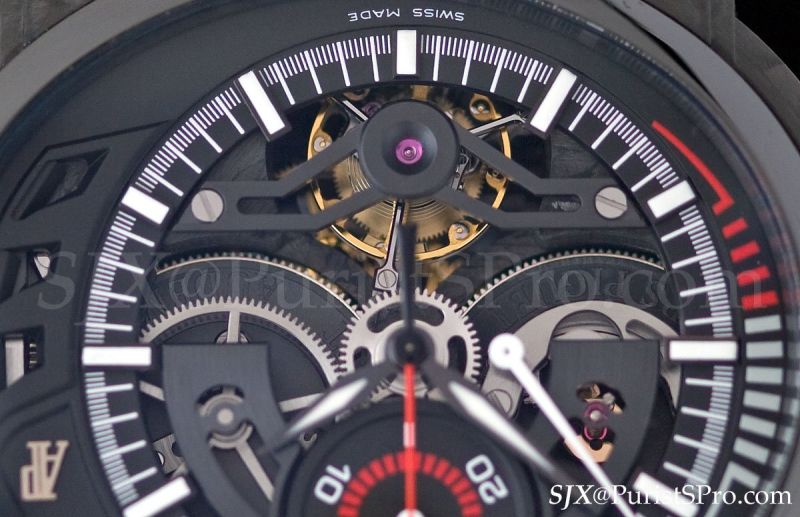
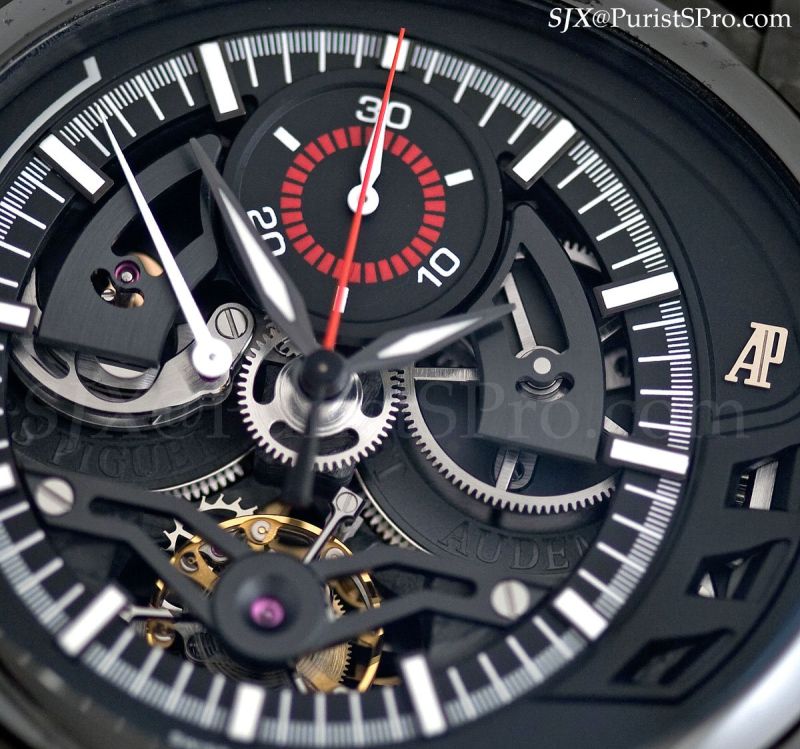
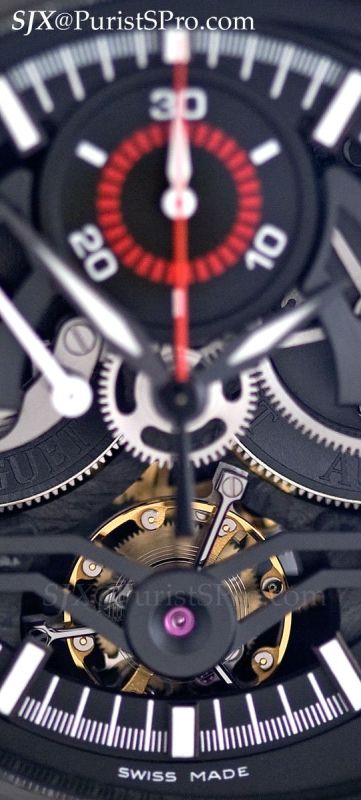
Unsurprisingly, the movement features bridges made of blackened steel or eloxed (meaning anodised) aluminium and a carbon fibre base plate. AP also touts its “rapid rotation twin-barrel system” which is also found in other Renaud et Papi tourbillon movements. Most of what comprises this watch, inside and out, has been used in prior models from AP or Richard Mille in one way or another; a similar movement was used in the Millenary Maserati MC12 of a few years back. But the Carbon One is nonetheless a sharp looking watch.
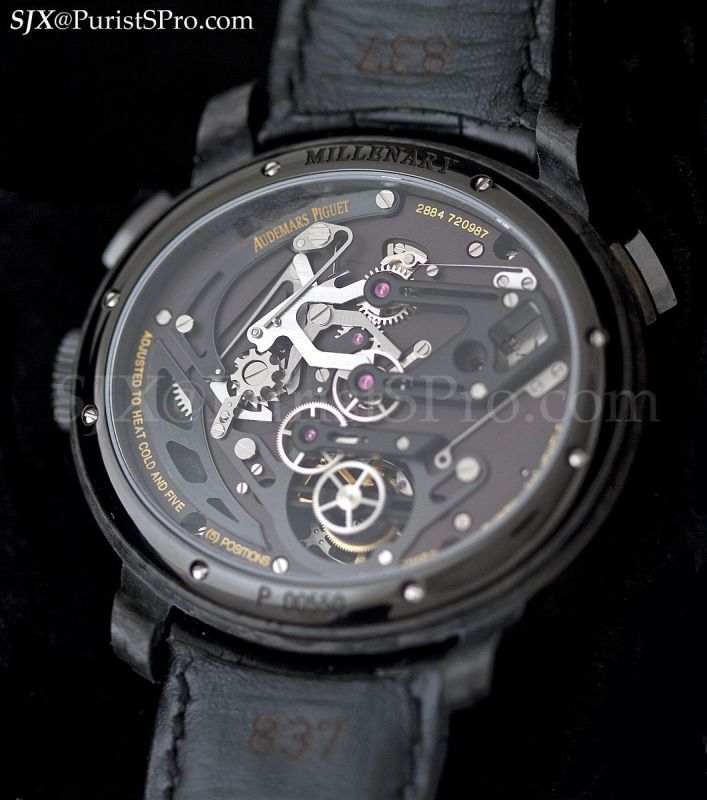
The classical Jules Audemars line received several new models as well. All of them are subtle, elegant watches. The first is an ultra-slim automatic containing the famous cal. 2121 first used in the 1972 Royal Oak and now a workhorse base for many AP watches.
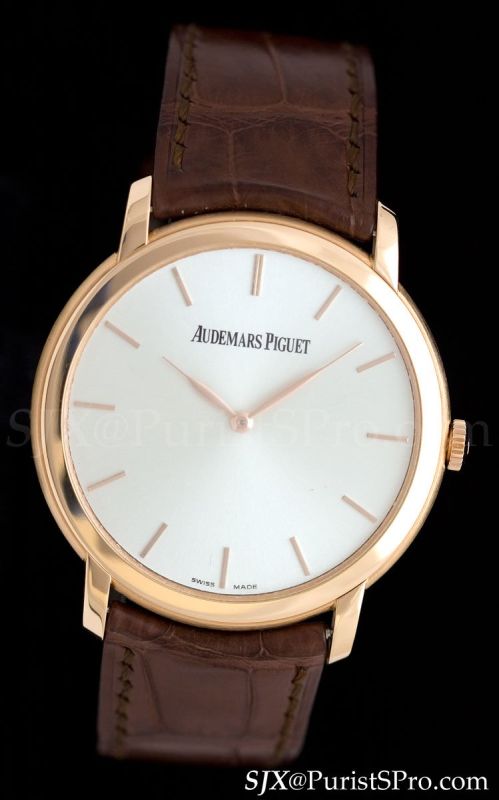
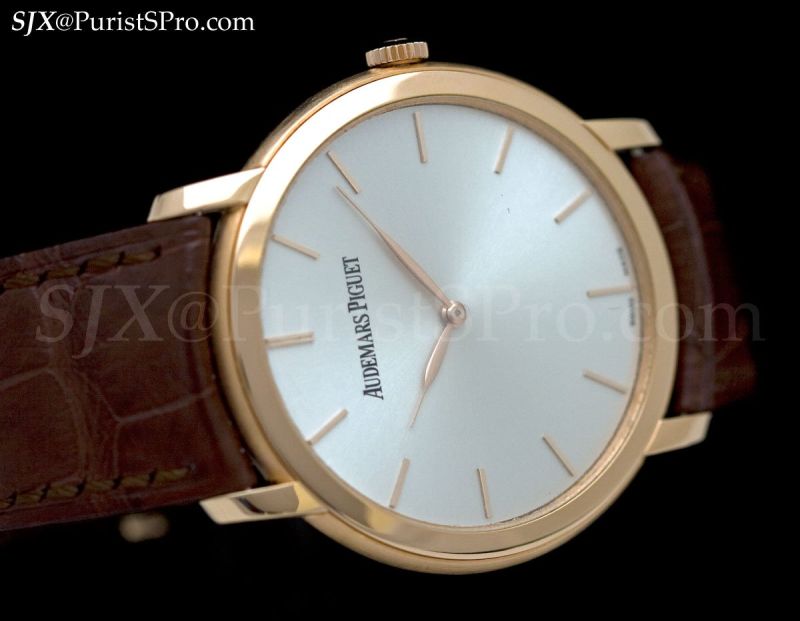

Another new Jules Audemars is a hand-wound, available in both men’s and ladies’ sizes, with a clous de Paris dial and bezel. Patek Philippe has applied this hobnail pattern to great effect throughout its range so much so that it is almost quintessential Patek. But the motif is a traditional guilloche pattern so it’s nice to see another haute horlogerie house making use of it and using it well.
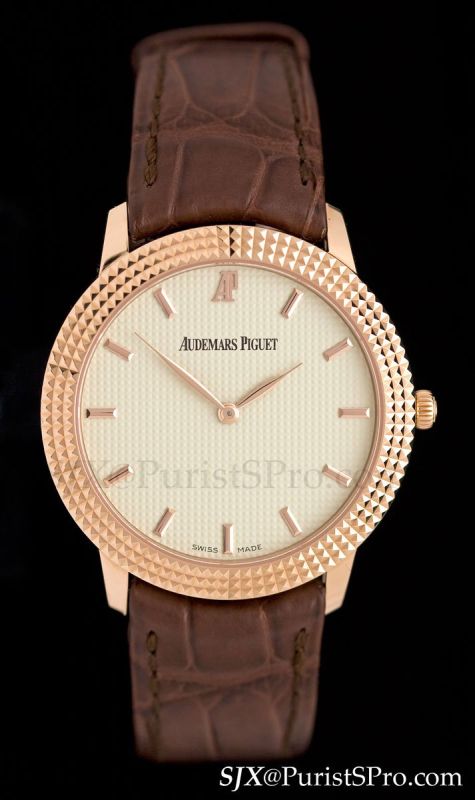
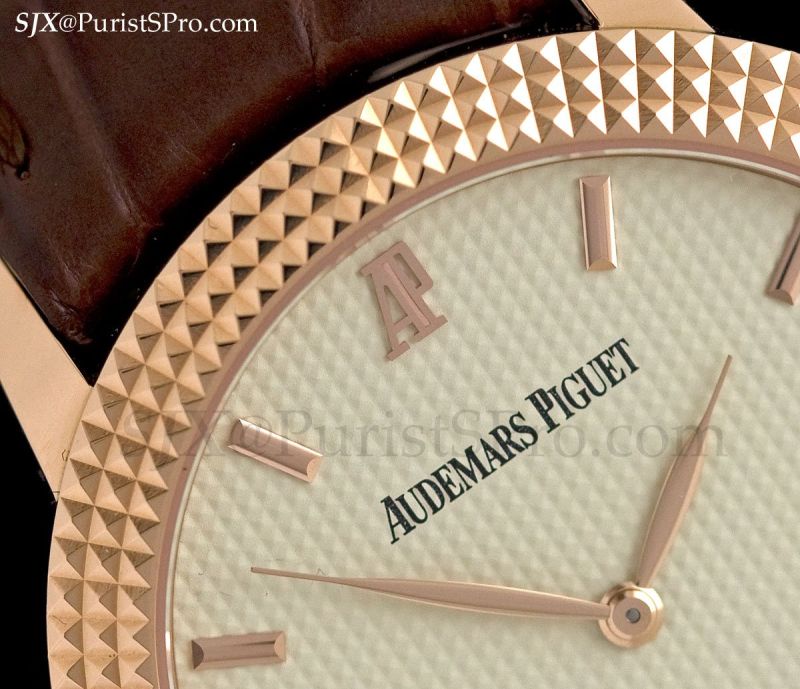

The Jules Audemars perpetual calendar, first seen as a limited edition in platinum with a blue dial two years ago, is now also available in rose gold with silver or brown dials. This is a large, flat and handsome watch. The platinum version feels very elegant on the wrist though it can be difficult to read at times, I expect this new silver dial variant to be far more legible. Inside beats a cal. 2121 based perpetual calendar that AP has been using for twenty years but remains a enduring.
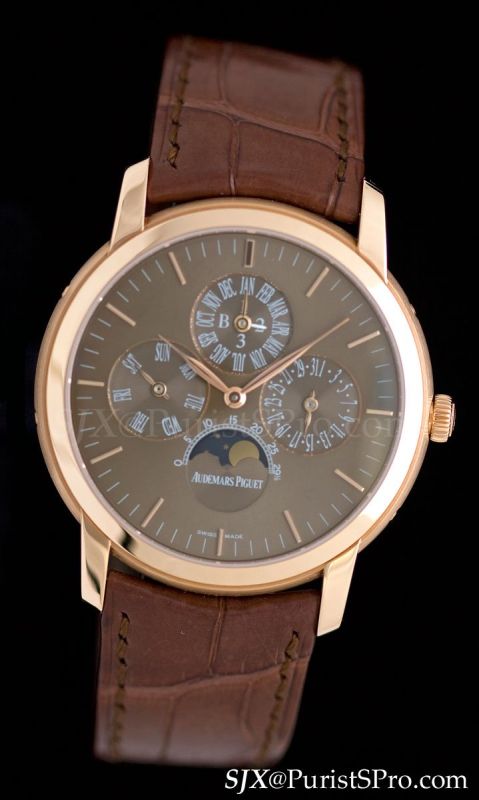
Now onto the Royal Oak collection which makes up the bulk of the new collection.
A crowd favourite (at least amongst the non-Offshore crowd) was the Royal Oak Equation of Time. The original EOT was introduced in the round Jules Audemars case with the city coordinates engraved on the bezel, in an unsightly font at that, which bothered me. This new Royal Oak version solves that problem by putting the city on the outermost dial ring.


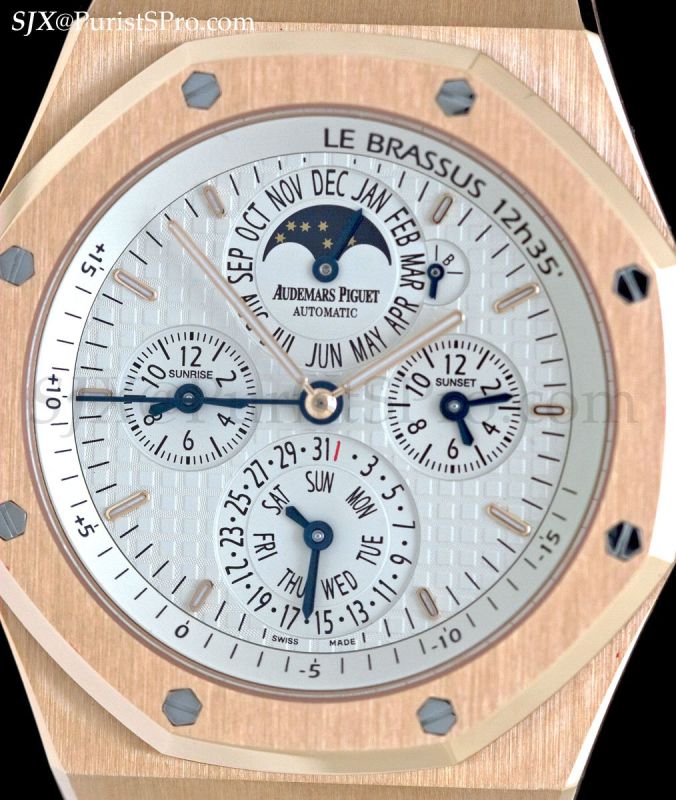
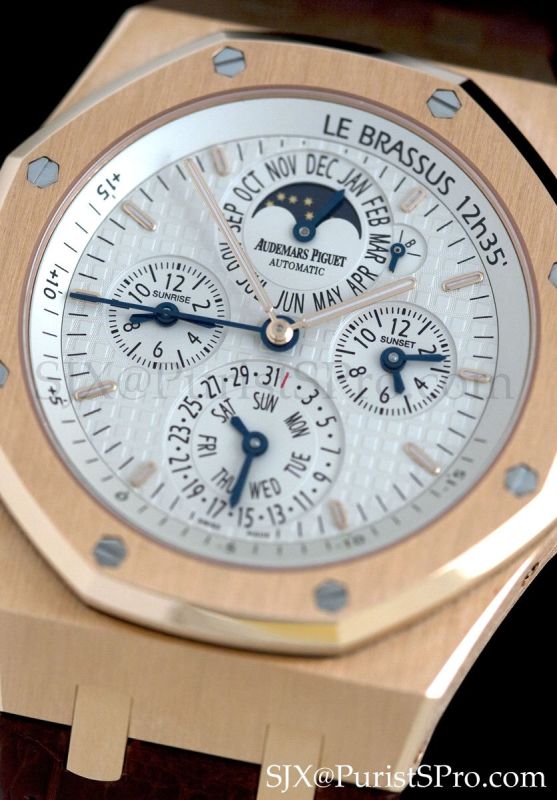
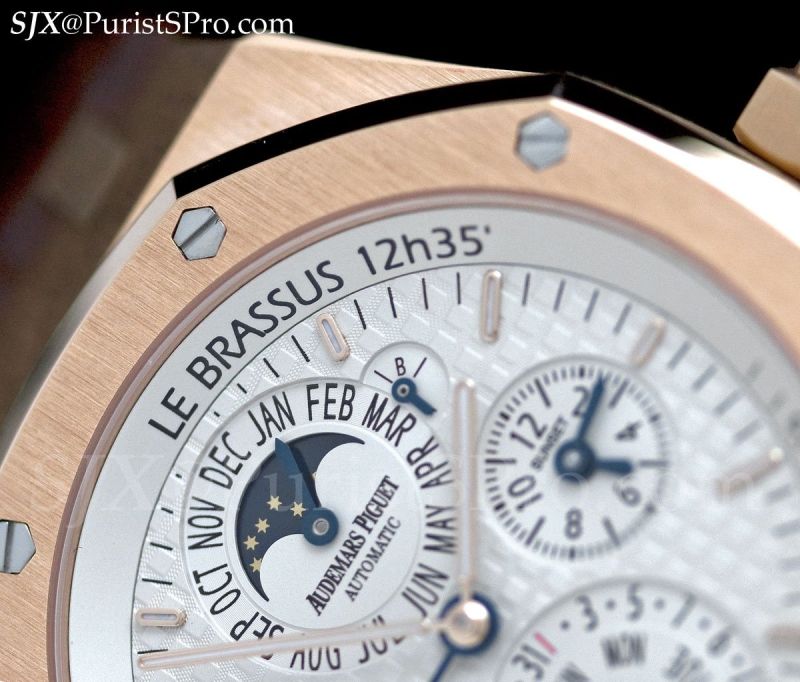
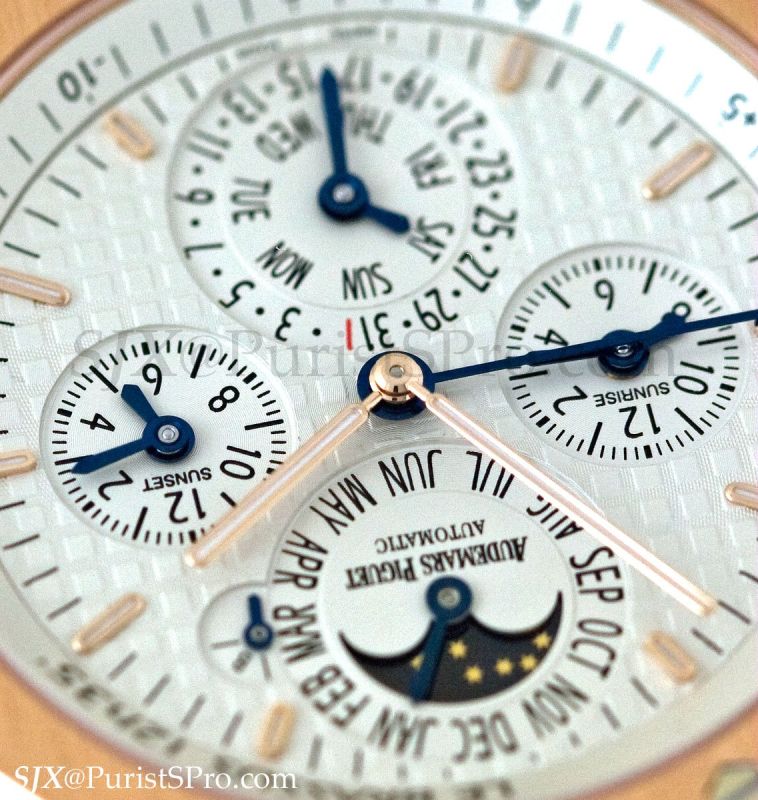

Its case is large at 42 mm wide, but thin at 10.5 mm high, giving it the proportions of the classic Royal Oak Jumbo, though it is larger in size. Inside is the venerable ultra-flat cal. 2121 (notice how many times I am mentioning this). The Royal Oak has long been available as a perpetual calendar based on the cal. 2121, since the mid 1980s at least, and the Royal Oak EOT is a long awaited and worthy update to a classic.


Several long existing Royal Oak models have undergone face lifts. The classic but largely neglected Royal Oak Day-Date has been tweaked, giving it a slightly more modern look and a larger 39 mm case.
In rose gold or steel

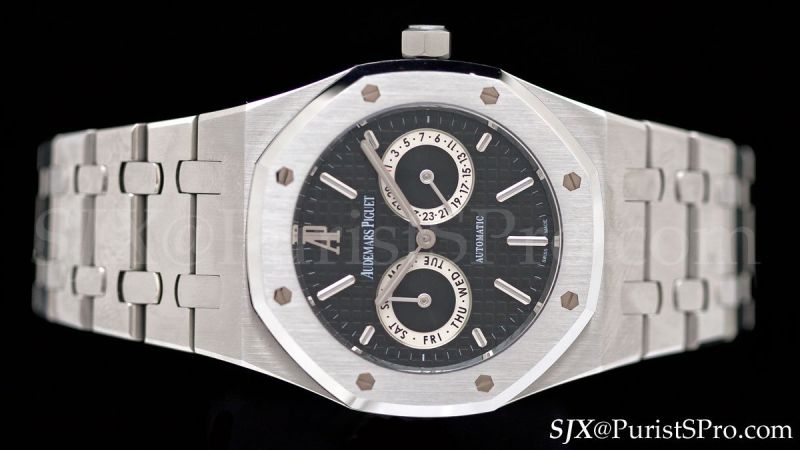
On the other hand the Royal Oak Dual Time is now available as a ladies’ watch with a diamond set bezel.
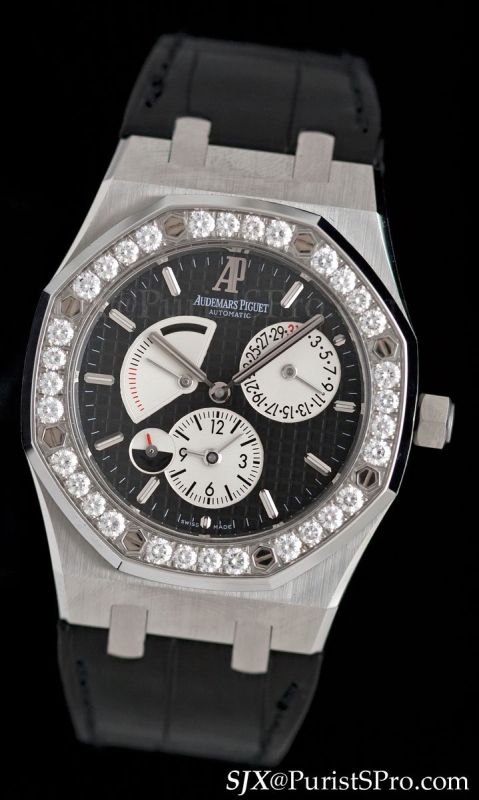
The Royal Oak Tourbillon Chronograph is now available with a rubber-clad bezel like the Offshore Rubberclad, though this is a Royal Oak and not an Offshore.

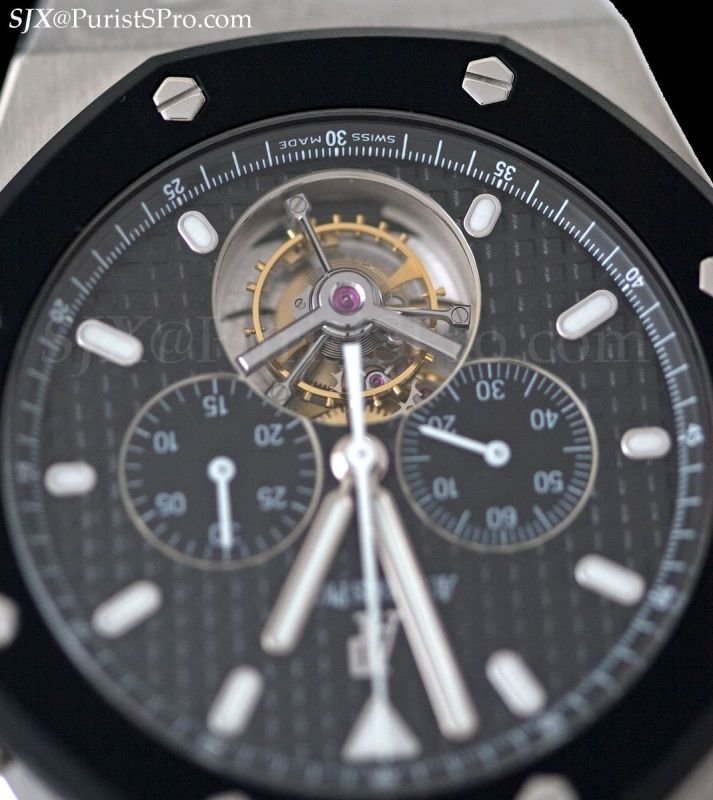

Rounding off the Royal Oak range is another watch that’s well worthy of note, an automatic skeleton based on the 15300. This watch is strikingly different from past iterations of the Royal Oak skeleton which were mostly skeletons with the fussy, baroque decoration that is usually found in skeleton watches.
Skeleton in steel


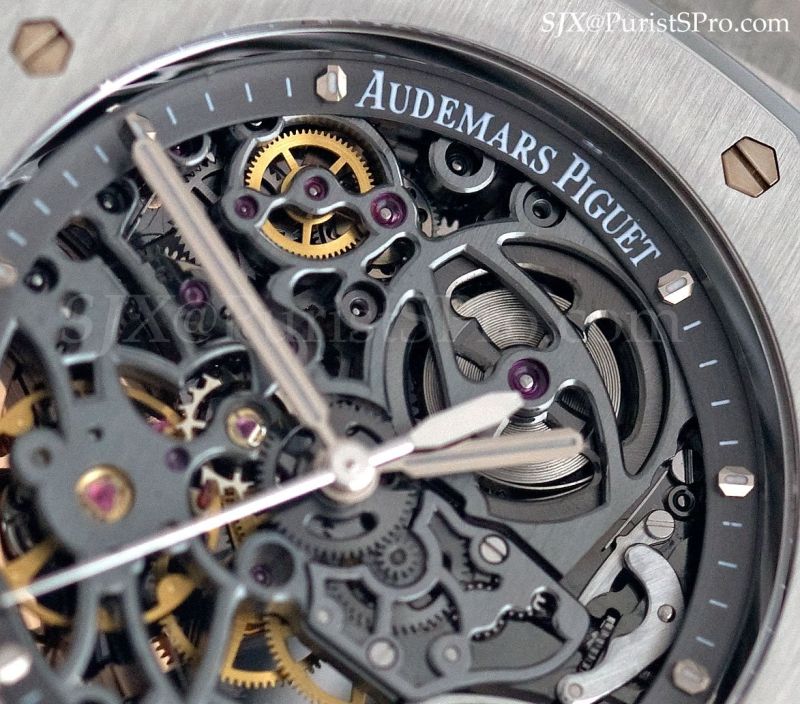
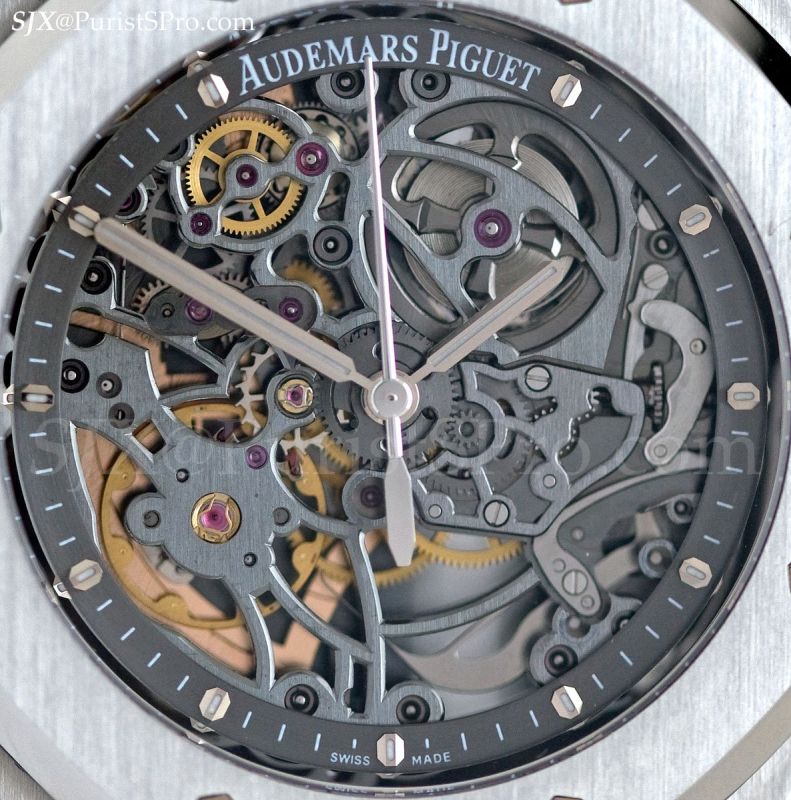
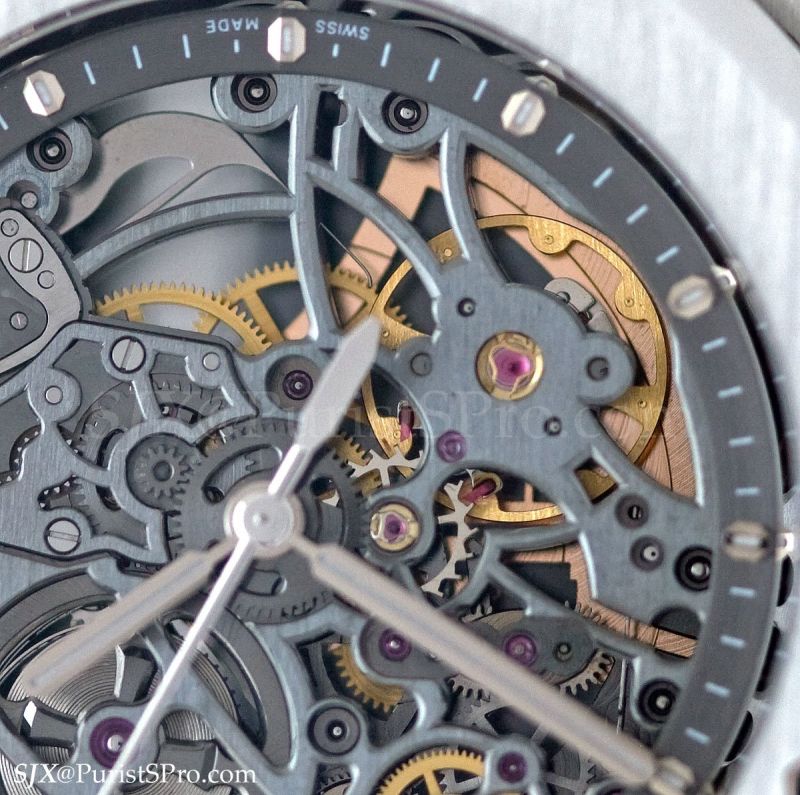
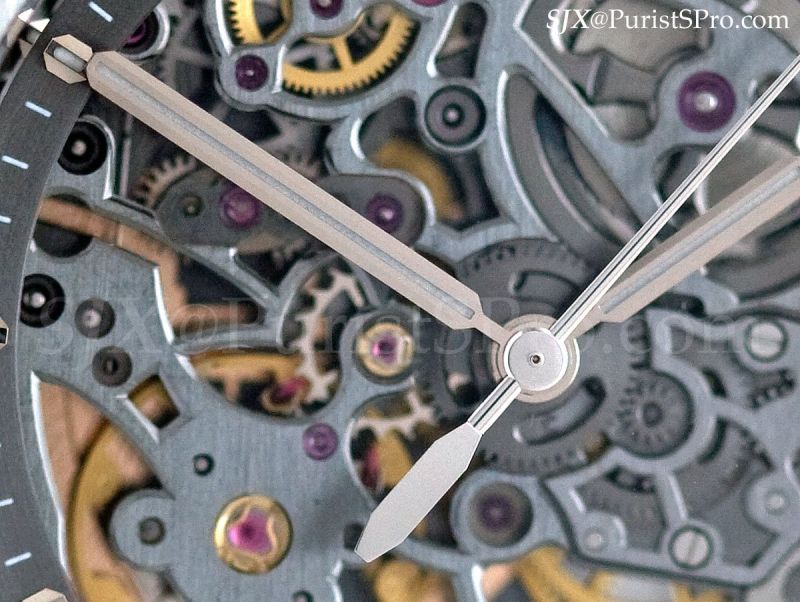
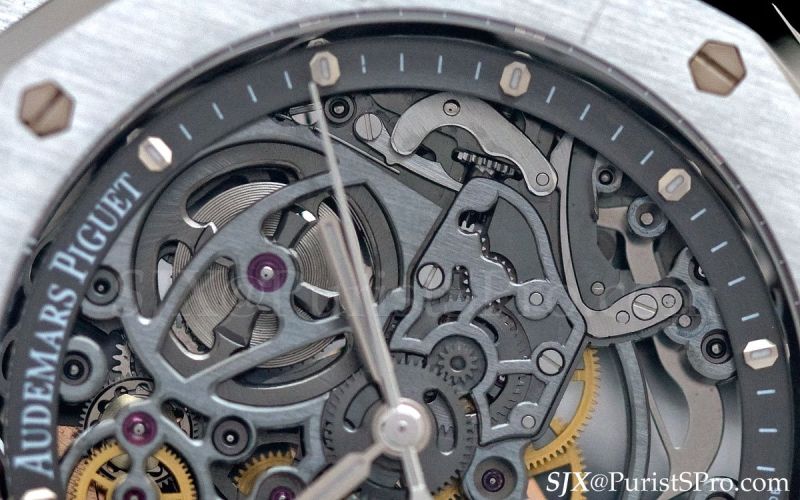
The movement, a cal. 3120 in-house automatic, sports ruthenium finished bridges, cleanly brushed and bevelled. The finish is simple and slightly industrial in look and feel but attractive, and it goes well with the complex case. I would not characterise it as exceptionally refined in finish but it is well done and appropriate for the look of the watch.
In rose gold

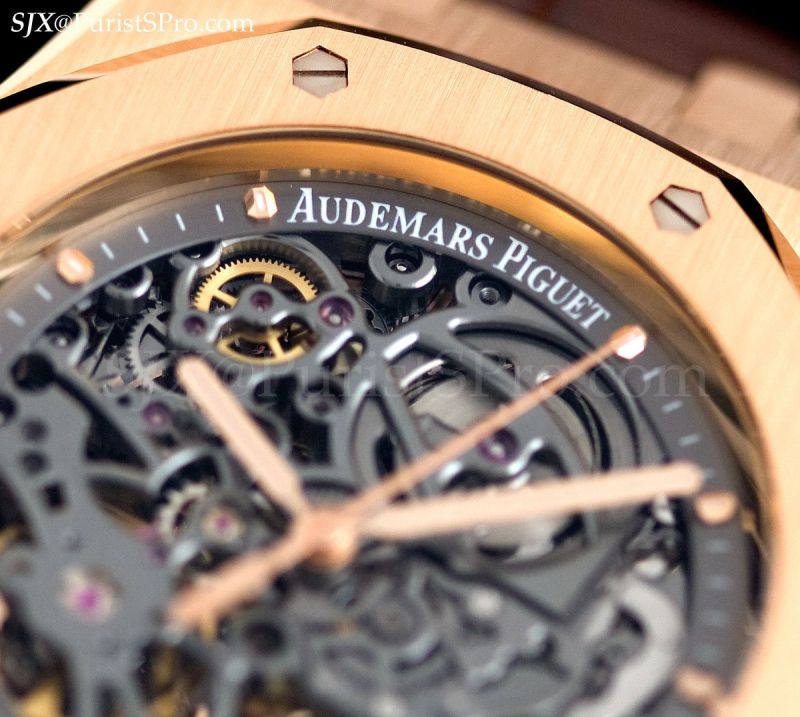
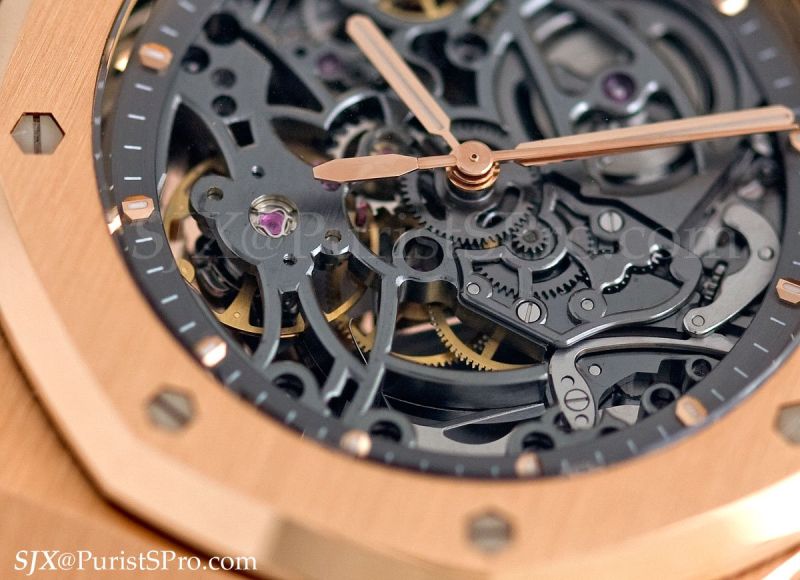
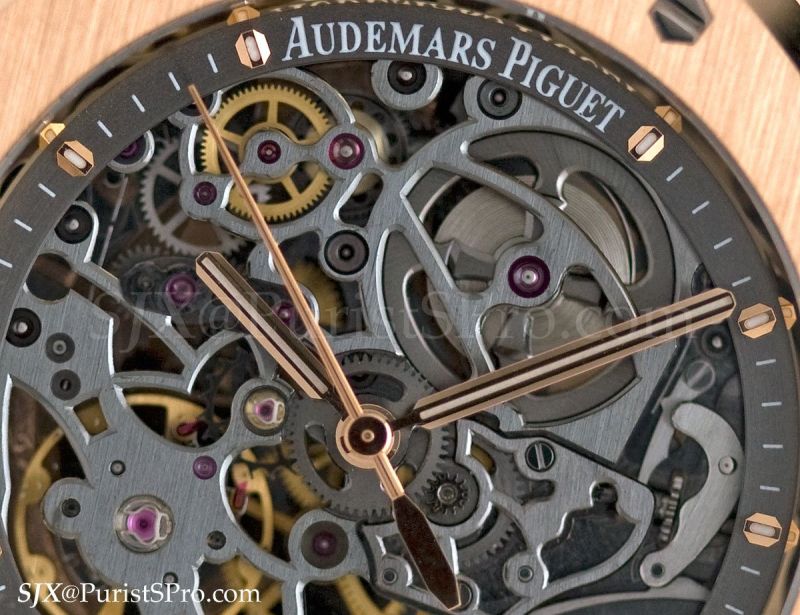



Now on to the Offshore, everyone’s favourite Royal Oak. The first is a watch that many have been predicting, and some hoping, for some time. The Offshore Scuba was first launched in a variety of limited editions sold at boutiques, and now it is part of the regular collection as the Offshore Diver.
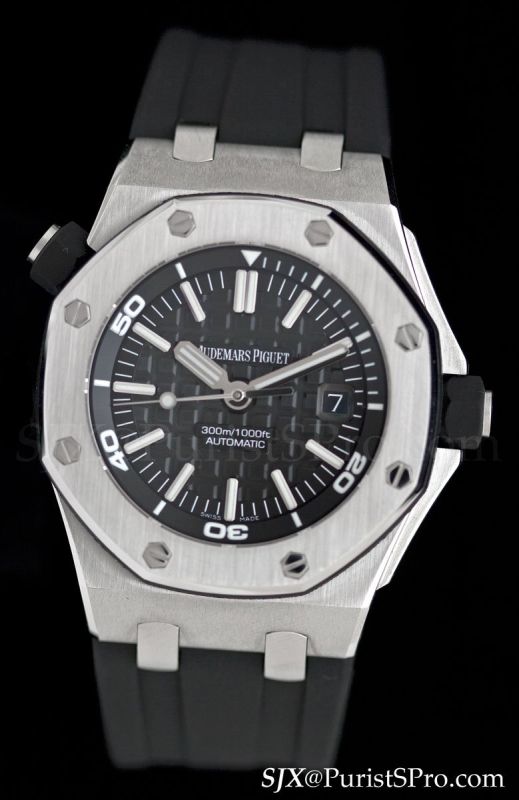
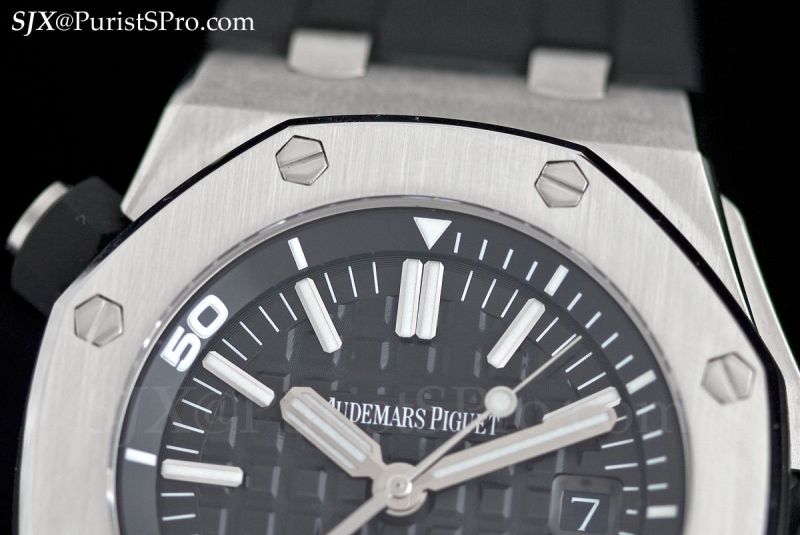
Water resistant to 300 m, it uses an internal rotating bezel for elapsed time. It is largely identical to the Scuba, except the hands have been replaced by a pair similar to those found on various limited edition Offshores.
And for those who think the Diver is too discrete, AP unveiled a pair of diamond-set men’s Offshores. One is the yellow gold watch you see below, but it pales in comparison to another that I saw but did not photograph, an Offshore chronograph on bracelet set with some 70 ct of baguette diamonds and priced at over a million dollars.



Of course AP has to also present a few mandatory Offshore limited editions. The first is a 100 piece edition to commemorate for automobile racing, with 60 pieces for France’s Tour Auto and the remainder for the Belgian National Classic Tour. Both are identical except for the case back engraving.



The next Offshore limited edition is one that I am sure has been causing conniptions amongst Offshore fans the world over. This Offshore Grand Prix is a pastiche of Offshores past – is that what biologists term evolution? It’s as if AP had raided the Valhalla of Offshore-dom and extracted DNA from each of the glorious Offshores of old before combining them into an über-Offshore.
Offshore Grand Prix in forged carbon




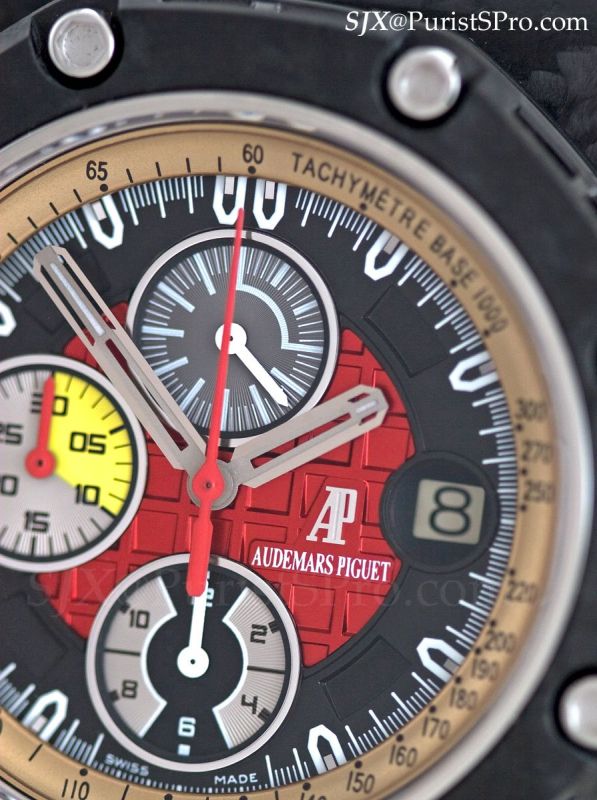

Offshore Grand Prix in rose gold



The Grand Prix is a riot of screws, slots and vents. And it sports an appropriately varied colour scheme. But bizarre as this watch looks, it is appealing in a fundamental, “mine’s bigger” way. In case anyone doubts how powerful this watch is, the checkerboard dial guilloche used is a special inverse and sloped “Mega Tapisserie” guilloche.
This watch has a display back and the rotor is decorated with more sloping vents but I was so distracted by the front I forgot to photograph the back.
Offshore Grand Prix in platinum

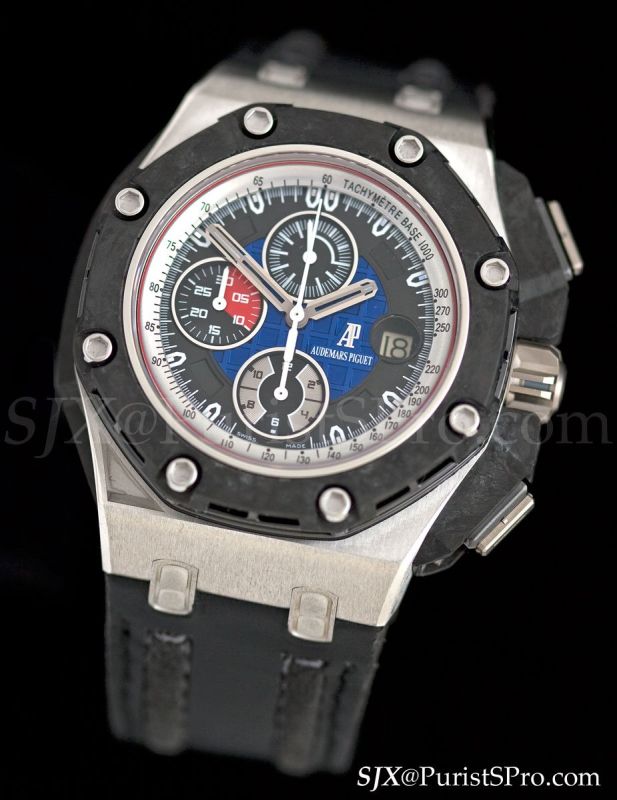


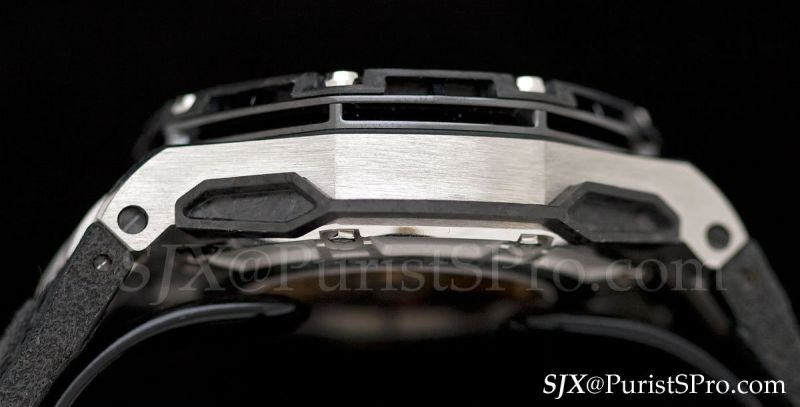

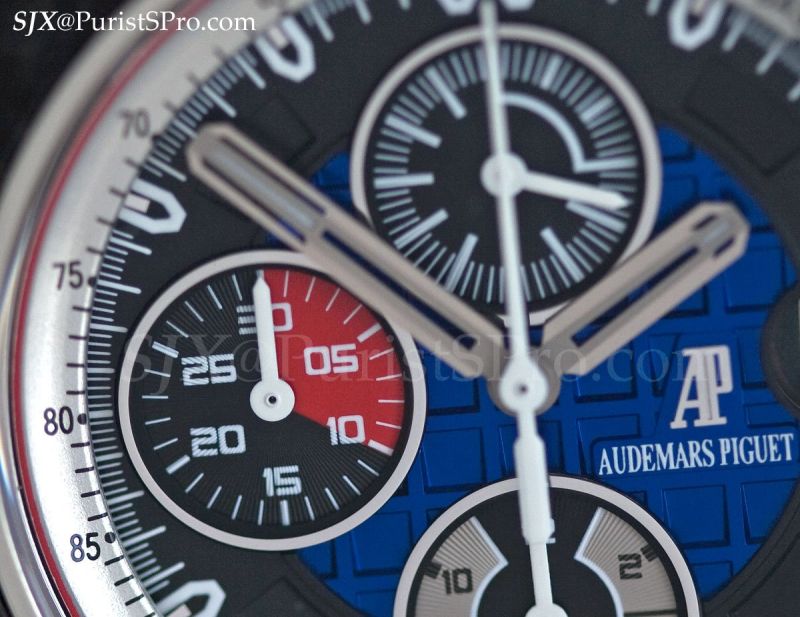
Three versions are available: forged carbon, rose gold or platinum, with 1750, 650 and 75 pieces made respectively. Especially attractive is the forged carbon version, the red accent on the side of the calf and alcantara strap is a pleasing touch. Though the market for Offshore limited editions has cooled severely, I can imagine the premiums that will be asked for this watch before it even hits dealers.
This year, for the first time, AP presented an Offshore high complication, a tourbillon-chronograph with a ten day power reserve. It is 44 mm wide which makes it the same width as the normal Offshore chronograph though this feels and looks more massive. The case is rose gold with a forged carbon bezel as well as a ceramic crown and pushers. It has a massive black anodised aluminium tourbillon bridge that partially obscures the escapement, though it complements the overall aesthetic of the watch well.

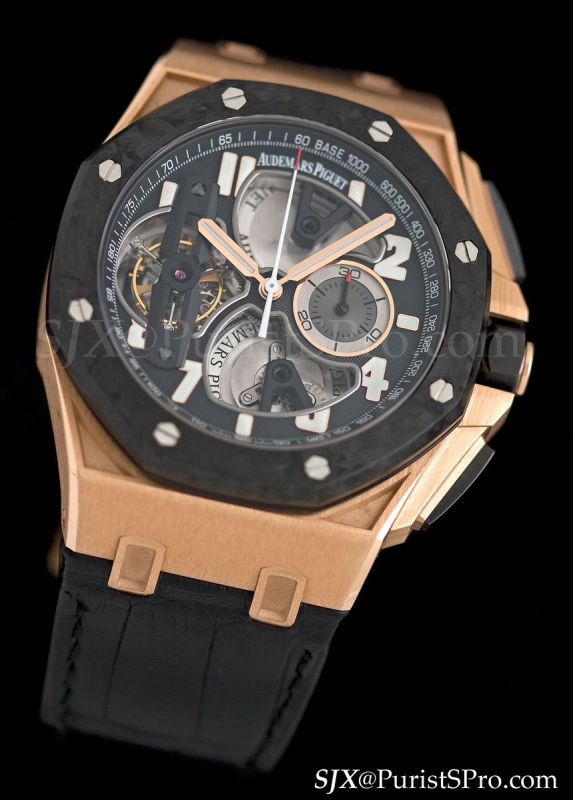
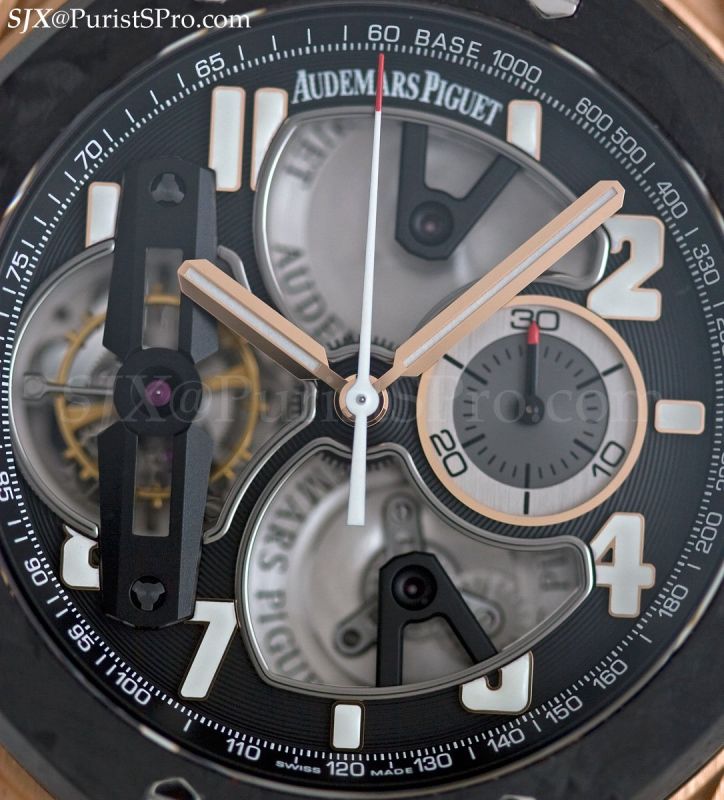



Hopefully this is the first of many exotic complications in the Offshore case. It is so large that it can accommodate a lot, giving watchmakers a lot of space to work with. One that I have suggested, and hope to see, is a Starwheel Offshore. Maybe in a black case (ceramic? carbon?) with a black movement (ceramic? carbon?), but I am being far too creative.


And though most want it bigger, AP presented the Offshore chronograph in a 37 mm case for ladies. It contains a Frederic Piguet 1185 calibre.
Three versions of this are available, a plain steel version, steel with diamond-set bezel, and a white gold version with a fully set case and mother-of-pearl subdials. All three are identical in dimensions, though only the two diamond set versions are strictly ladies’ watches.




===
For SJX’s original post in SIHH 2010 forum, please CLICK HERE
****No shilling or links to grey Market Dealers allowed per forum rules***



